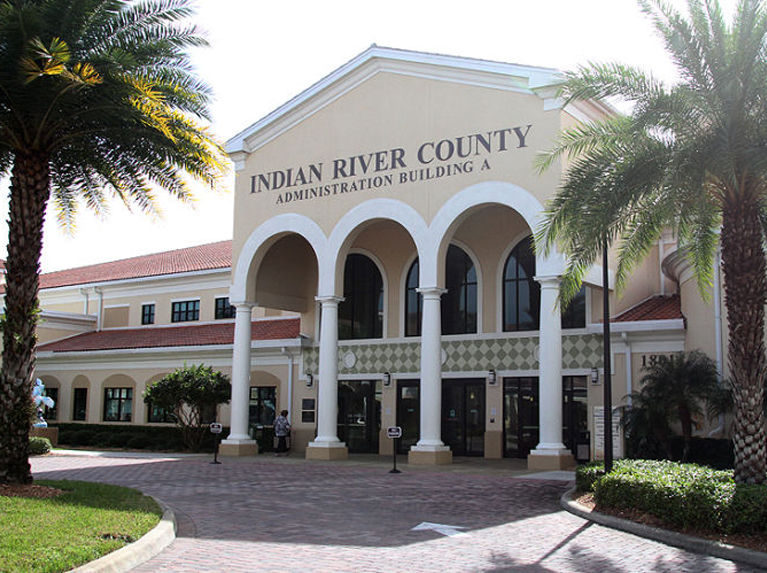
More than two years after county commissioners made dealing with septic systems polluting the Indian River Lagoon a top priority, Indian River County has not stopped the flow of poison from a single septic tank.
County commissioners freely acknowledge septic tank pollution is a serious threat to the lagoon and they have paid for two small septic-to-sewer feasibility studies and one set of construction drawings that covers part of one study area.
There are more than 35,000 septic systems in Indian River County, many of them built prior to 1983, when state regulations required only a six-inch separation between groundwater and the bottom of septic drain fields, and allowed drain fields within 25 feet of the lagoon. Many of the poorly designed old systems are now failing, discharging toxic chemicals into the groundwater and estuary.
To date, the county has not launched any projects to eliminate septic systems, and it does not have any such projects scheduled at this time.
Other local governments have been more responsive in the nearly three years since Harbor Branch researchers revealed that septic systems are flooding the with ecology-killing pollution.
The City of Vero Beach is steadily installing innovative sewer infrastructure that eventually will replace all 1,600 septic systems in the city, capturing huge quantities of lagoon-killing nutrients each year, along with other household chemicals that now flow into the waterway.
A number of people have already hooked up to the new system and Vero Utilities Director Rob Bolton expects many more to connect in the coming year.
The City of Sebastian has launched new septic-to-sewer initiatives as well, including a $100,000-per-year grant program to assist property owners near the lagoon in making the switch from third-world waste systems to modern sewers. That program has begun to move businesses and residences off septic.
On Dec. 16, Sebastian’s environmentally-minded mayor Richard Gillmor got a unanimous “yes” vote from the city council when he suggested trying to use the same sewer technology Vero is using in order to accelerate the process of reducing septic systems in Sebastian.
Nearby counties are taking decisive action, too. In November, the Martin County Commission voted unanimously in favor of a long-range $138 million plan aimed at eliminating 10,400 of the 16,000 septic systems in the county utilities service area.
In April 2013, Harbor Branch scientist Brian Lapointe reported that much of the harmful nitrogen in the lagoon was coming from human sewage leaking from county septic tanks. The nitrogen feeds algae blooms that smother sea life, while coliform bacteria and household chemicals further pollute the water, making it dangerous for humans and spreading disease among bottlenose dolphins and other marine animals
“We found a very strong chemical signal of sewage pollution along the length of lagoon, with the highest levels in Indian River County,” Lapointe said at that time. “At the end of the rainy season the IRC lagoon had an average reading … [equivalent to] what you would get if you tested at the mouth of a sewage treatment outfall. The measurements are off the charts.”
The County Commission’s initial reaction to Lapointe’s revelation seemed promising. In August 2013, the board commissioned the two feasibility studies – one in the Summerplace neighborhood on the island and the other in a section of North Sebastian adjacent to the lagoon.
It was a measure of the county’s sense of urgency that the studies were due back in October, just 60 days after the funds were approved.
“The engineering firms wanted 90 days to complete the work,” county utility head Vincent Burke said at the time. “But the commission is very concerned about this problem and wants to see its options as soon as possible.”
Unfortunately, the sense of urgency somehow evaporated.
When Summerplace residents pushed back angrily against the cost of installing sewers in their neighborhood, the county commission backed down quickly and completely. After spending $38,500 in the fall of 2013 for the engineering study, commissioners voted in April 2014 to officially abandon the idea of eliminating septic tanks in the low-lying waterside subdivision.
Sebastian residents were more receptive and planning for that project continued, but going into 2016 those plans are not complete and there is no funding in place to install sewers in the planning area – which is known to be spewing pollution into the groundwater and lagoon.
After hearing a presentation from Lapointe about new research that backs up the findings he reported in 2013, Martin County is pushing ahead with the first phase of its major project, preparing for construction in three neighborhoods at a cost of $33 million that will take out more than 2,100 septic systems.
Sebastian is helping residents make the switch from septic to sewer with its grant program, putting its money where its mouth is, and Vero will soon have sewer infrastructure in place that makes it possible to eliminate septic tanks on the city’s part of the barrier island.
By contrast, the Indian River County commission’s most recent action was a bit less dramatic.
On Dec. 15, the board approved funding to finally finish a plan for the small Sebastian sewer project that was first considered almost two and half years ago.
Burke asked the commission for money to complete the plan in hopes that having a shovel-ready project will increase the county’s odds of getting state grants to actually build the needed infrastructure.
Having the plan finished moves the project one step closer to reality, but there is no guarantee state funding will come through and no timeline for breaking ground on a project critical to protecting the Indian River Lagoon – which commissioners all continue name as one of their top priorities.



